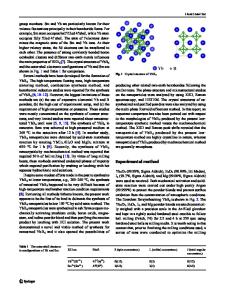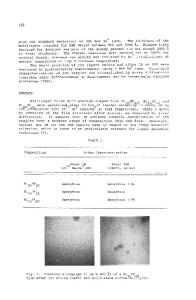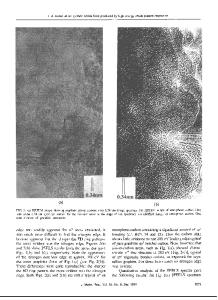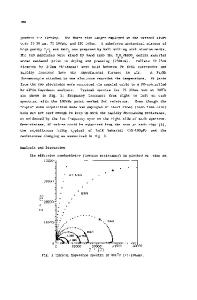Supported High Temperature Protonic Films Produced by Solid State Reaction
- PDF / 6,915,845 Bytes
- 8 Pages / 612 x 792 pts (letter) Page_size
- 64 Downloads / 377 Views
0972-AA01-01
Supported High Temperature Protonic Films Produced by Solid State Reaction Wilhelm A. Meulenberg1 and José M. Serra2 1 Forschungszentrum Jülich, Institute for Materials and Processes in Energy Systems (IWV-1), Jülich, 52428, Germany 2 Instituto de Tecnologia Quimica (UPV-CSIC), av. Los Naranjos s/n, Valencia, 46022, Spain
ABSTRACT This work presents the last progresses in the development of thin oxidic proton conducting electrolytes supported on mixed conducting cermets making use of a solid state reaction. The procedure includes preparation routes applying solid state transformation of an already-gastight oxide layer (typically doped zirconia or ceria) by reacting with an alkali-earth layer (stoichiometric amount) deposited by screen printing on top of that. This kind of supported films can find application as IT-SOFC, H2-membranes and advanced catalytic converters. Thinfilm (~5µm) proton conducting membranes with the nominal composition as for instance BaZr0.85Y0.15O3-δ and BaCe0.8Gd0.2O3-δ were prepared over porous Ni-8YSZ or Ni-CGO substrates by solid state reaction. The produced films are gastight with a homogeneous composition, and showed a highly crystalline cubic perovskite structure. The solid state reaction promoted the formation of (i) a different grain size distribution from 0.1 µm for barium zirconate to 2-3µm for barium cerate, and (b) the formation of a porous fibrous top-layer (for barium zirconate) or a just flat surface (for strontium zirconate), depending on the exact composition of the reacting oxides. INTRODUCTION Proton conducting membranes for hydrogen separation can be coupled with hydrocarbon reforming and water-gas-shift processes obtaining in turn a hydrogen stream - suitable as energy vector- and a humid CO2 stream that can readily be liquefied. Moreover, the use of this membrane in catalytic converters would allow controlling hydrogen removal or feeding, in order to displace the equilibrium or increase the process selectivity. In addition, protonic conductors such as doped BaCeO3 and BaZrxCe1-xO3 can be employed as solid oxide fuel cell (SOFC) electrolyte operating at intermediate temperatures as low as 500ºC, resulting in a longer life of the whole SOFC system as well as cheaper engineering solutions and construction materials [1,2,3,4,5]. For those purposes, thin electrolyte layers should be obtained preferably over porous substrates with good electronic conductivity. Therefore, a paramount issue is the preparation of the thin electrolyte without passing through very high temperature (1600ºC) treatments, which typically lead to metal evaporation problems, support densification or degradation and expensive manufacture. Accordingly, new methods are being studied in order to reduce these troubles for preparing thin membranes [6]. BaCe1-xYxO3 electrolytes with a thickness between 8 and 30 µm have been prepared by colloidal spraying [7]. Another alternative method, is the application of solid state transformation of a gastight electrolyte (easier to sinter), producing a final
Data Loading...











